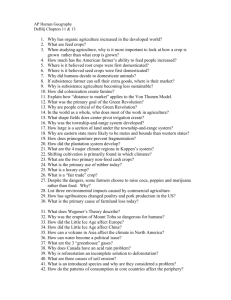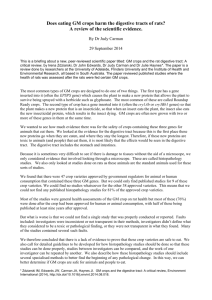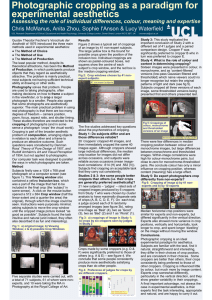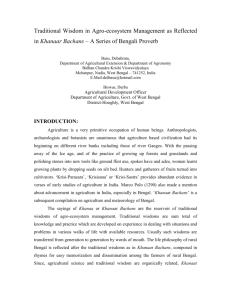WORD - FSM
advertisement
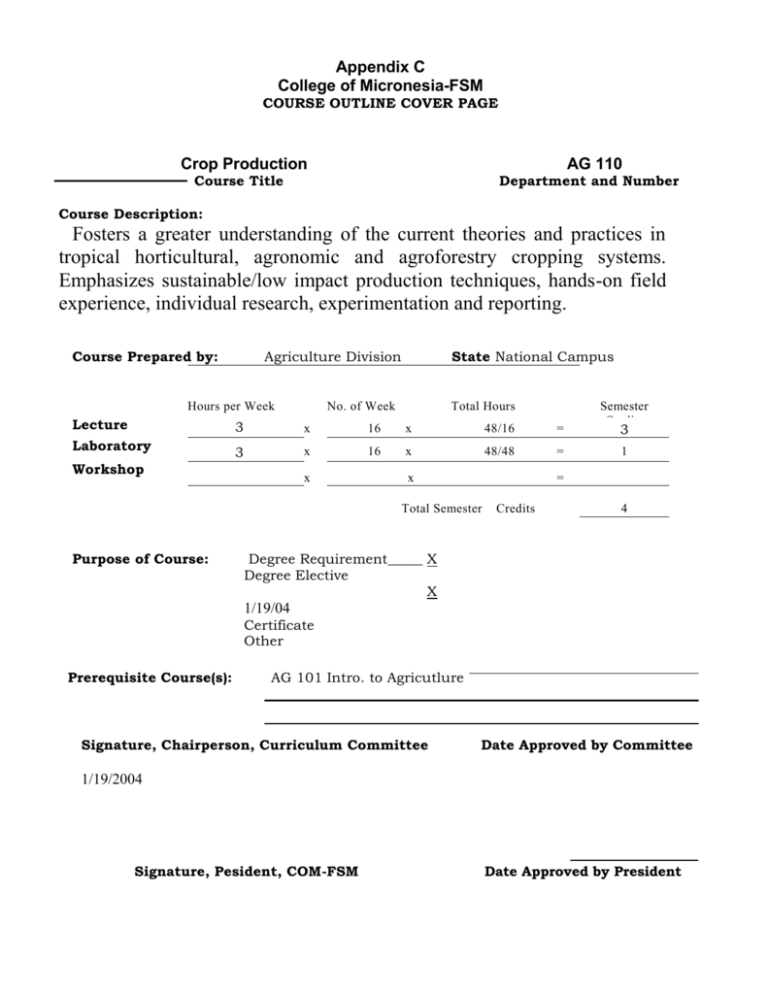
Appendix C College of Micronesia-FSM COURSE OUTLINE COVER PAGE Crop Production AG 110 Course Title Department and Number Course Description: Fosters a greater understanding of the current theories and practices in tropical horticultural, agronomic and agroforestry cropping systems. Emphasizes sustainable/low impact production techniques, hands-on field experience, individual research, experimentation and reporting. Course Prepared by: Agriculture Division Hours per Week State National Campus No. of Week Total Hours Lecture 3 x 16 x 48/16 = Laboratory 3 x 16 x 48/48 = Workshop x x 3 1 = Total Semester Purpose of Course: Semester Credits Credits 4 Degree Requirement _____ X Degree Elective X 1/19/04 Certificate Other Prerequisite Course(s): AG 101 Intro. to Agricutlure Signature, Chairperson, Curriculum Committee Date Approved by Committee 1/19/2004 Signature, Pesident, COM-FSM Date Approved by President COURSE TITLE AND NUMBER: AG 110 Crop Production CREDIT HOURS: 4 COURSE DESCRIPTION: Foster a greater understanding of the current theories and practices in tropical horticultural, agronomic and agroforestry cropping systems. Emphasizes sustainable low impact production techniques, hands-on field experience, and individual research, experimentation and reporting. COURSE OBJECTIVES: After completing AG 110 students should be able to: 1. 2. 3. 4. Analyze the land available and select the best land for crop production; Understand and explain how to propagate the common food crops in the field; Decide and explain the type of cropping systems to use; and Successfully grow and manage any of the food crops covered in the course and be able to obtain good yields. Course Competencies: 1. 2. 3. 4. Identify the properties of land that are good for crop production. Demonstrate an ability to carry out successful land clearing techniques. Demonstrate an understanding of how to successfully make and manage a nursery. Identify vegetable crops that are commonly planted by farmers in the FSM by their common and scientific names. 5. Know and be able to explain how to propagate the different aroids in the field. 6. List some of the diseases and pests of the different aroids. 7. Explain the importance of tubers crops to the FSM people. 8. Demonstrate an understanding of how to propagate tubers crops. 9. Discuss why legumes are important crops in the FSM region. 10. List the problems associated with growing these legumes in the region. COURSE OUTLINE 1. 2. 3. 4. 5. 6. 7. 8. 9. 10. Site selection Tillage and land preparation Plant Growth and Environmental Factors Seed propagation Vegetative Propagation Types of Cropping systems Tropical vegetables Crops Susceptible to Bacteria Wilt Cole crops or Brassies Cucurbits 11. 12. 13. 14. 15. 16. 17. 18. 19. 20. 21. 22. Legumes Morphology of the main aroids Propagation of aroids husbandry of aroids Cassava Yams Sweet Potato Cereals Cultivation of cultivars Propagation Husbandry Harvesting TEXTBOOK: Crop Production, Course Book One. School of Agriculture Alafua, Campus. METHODS OF EVALUATION: Tests and worksheets Farm Plan 70% 30% ATTENDANCE POLICY Regular class attendance is expected. Students who cease attending class without official withdrawal will receive an "F" grade for the class.




